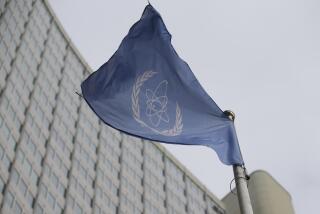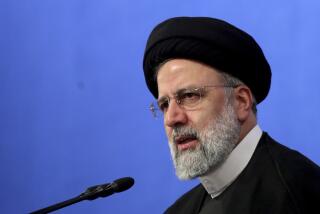U.S. holding 324 metric tons of bomb-grade uranium, report says
The Energy Department is holding 324 metric tons of bomb-grade uranium at the same time the Obama administration is urging nations to reduce or eliminate their stores of the material, according to a report to be released Tuesday by the nuclear watchdog group Project on Government Oversight.
The Washington-based group wants the administration to declare a portion of the U.S. inventory of highly enriched uranium as surplus and increase the amount that is blended down each year into commercial reactor fuel.
The inventory began to swell years ago after the U.S. agreed to a series of nuclear arms accords resulting in the decommissioning of thousands of nuclear warheads. The U.S. stopped making highly enriched uranium after the end of the Cold War.
The Energy Department’s National Nuclear Security Administration, or NNSA, defended the rate at which it is blending the uranium into commercial fuel, noting the difficulty and cost of the process. It did not comment on the size of the surplus, which is classified.
The NNSA also said that it was not sending out a contradictory message by maintaining the surplus. It said that its facilities are secure from terrorists and that the agency provides technical assistance to other nations when they give up their bomb materials.
But the issue is drawing fresh scrutiny from nuclear nonproliferation groups and Congress.
“The U.S. would be on higher moral ground if we clearly articulated that we are working to minimize our use of highly enriched uranium,” said Joan Rohlfing, president of the Nuclear Threat Initiative, a nonpartisan group. “It should be the norm that every country with these materials publishes their status.”
Staff from the House Armed Services Committee is preparing to go to a new $500-million Tennessee facility where the uranium is stored. A spokesman for the Republican staff said they wanted to ask why existing highly enriched uranium surpluses were being “downblended” at a slower than expected rate.
Frank N. von Hippel, a Princeton University nuclear weapons expert and co-chairman of the International Panel on Fissile Materials, said, “We are awash in surplus” highly enriched uranium. But von Hippel makes a more conservative estimate of the surplus, putting it at about 60 metric tons.
The Navy uses highly enriched uranium to power its submarines and aircraft carriers. Under an earlier declaration, 160 metric tons of the material was set aside for future Navy needs, enough for 25 to 50 years of operation.
Small amounts of the material are also used by research reactors to produce medical isotopes and by NASA to power deep-space probes.
ralph.vartabedian@latimes.com
More to Read
Sign up for Essential California
The most important California stories and recommendations in your inbox every morning.
You may occasionally receive promotional content from the Los Angeles Times.











